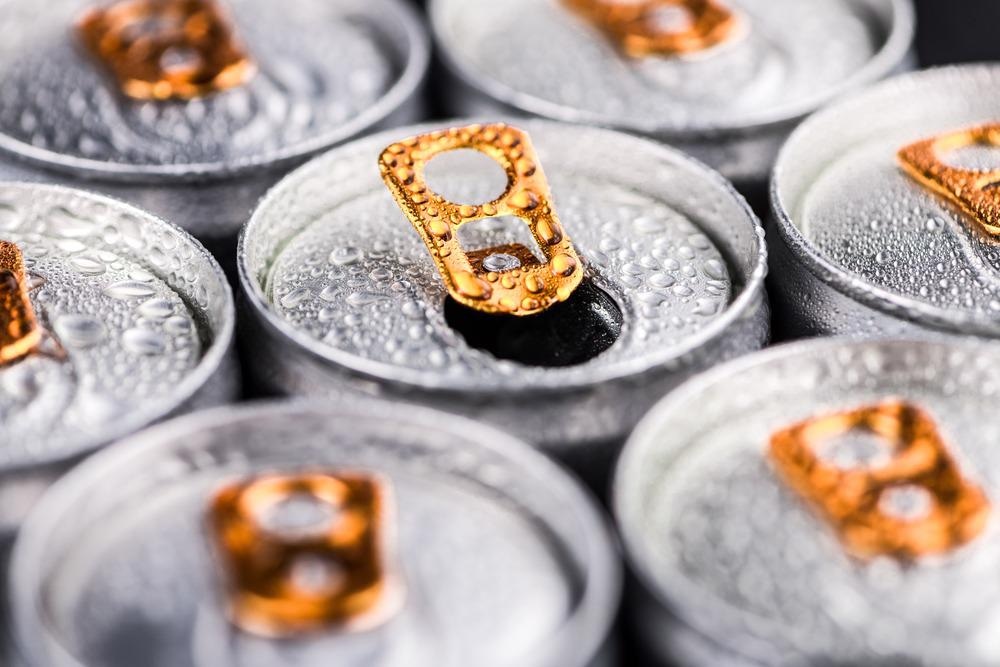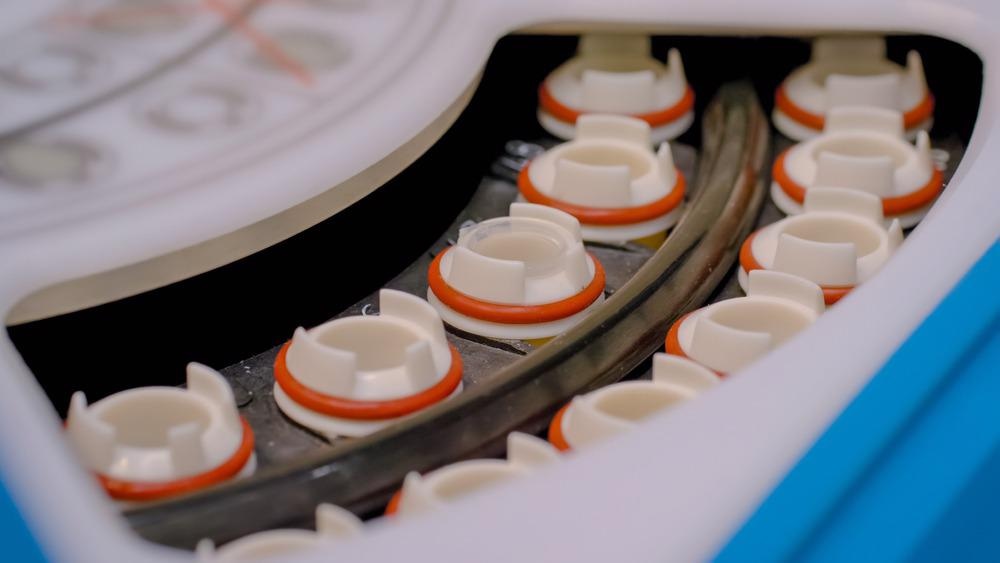People across the globe use energy drinks to improve their concentration and productivity. One of the most efficient methods to analyze these beverages is capillary electrophoresis. This article looks at its potential and relevance compared to alternative methods such as liquid chromatography.

Image Credit: HandmadePictures/Shutterstock.com
The majority of energy drinks are made from caffeine-rich compounds that include both caffeine and glutamate. Caffeine is a stimulant alkaloid found in over 63 species of plants globally. Pure caffeine is a bitter-tasting, odorless, white, solid substance. Caffeine has a molecular mass of 194.19 g and a melting temperature of 2360o C. Caffeine is hydrophilic at normal temperatures, with the highest concentration of 21.7g/L owing to its mild reactivity.
Different Separation Techniques for Energy Drinks
Soft drinks are a complicated system with many different sorts of components, both inorganic and organic. A separation examination is highly needed to enable accurate detection and assessment of caffeine and benzoate from a broad range of other types. The most frequent method used for the separation assessment of a combination is liquid chromatography (LC).
According to reports, liquid chromatography has been used to distinguish a broad variety of organic molecules, ranging from small-molecule contaminants to antimicrobial peptides. The various interfaces of the molecules in the sample in both the moving and static stages are at the heart of liquid chromatography separation. The tighter the connection, the better the molecule retains its position.
An alternative to high-performance liquid chromatography procedures is capillary electrophoresis separation in narrow-bore fused silica tubes, which uses an electric field to separate compounds from a variety of chemical groups within a single sample. CE may be categorized into numerous separating modes based on the capillaries and ions utilized.
Capillary electrophoresis methods are useful for food and beverages assessment because of the low specimen and reagent volume consumption, quick analytical duration, cheap operating cost, high-definition strength, higher removal effectiveness, easy experimenting, and fast process development.
Methodology of Capillary Electrophoresis
The separating method of electrophoresis is derived from various movements of chemical ions in an electrolytic cell under the applied electric field. In comparison to sophisticated liquid chromatography equipment, a capillary electrophoresis device is substantially straightforward. A connected tube with a 25-100 m inner diameter and a span of 20-100 cm connects two buffering basins, where a high voltage electrical supply (0-30 kV) is delivered through the conductors and is loaded with the electrolytic plan that works as the electrically charged carrier.
Under typical circumstances, the anode is regarded as the capillary's entry, while the cathode is regarded as the capillary's escape. A small amount of sample is injected hydraulically or electrokinetically at the capillary's anodic side. The electrokinetic infusion is carried out by substituting a buffering tank with a specimen vial and applying a current for a set period of time to enable particles to move into the capillaries.
Hydrostatic infusion delivers a sample based on a differential pressure between the capillary's entries and exits, and the amount of sample injected is determined by the differential pressure and the thickness of the polymeric matrix. When the specimen has been loaded, a block of the specimen is piled at the capillary's opening.

Image Credit: Zyabich/Shutterstock.com
A capillary electrophoresis technique’s separation property may be measured in two ways: separation resolution, Rs, and separation efficiency. The resolution of two analytes indicates how effectively they distinguish from one other. The greater the value of Rs, the more defined particular peaks are. Separation resolution quantifies the effectiveness of separation and assesses if a tweak in experimental circumstances results in a separation of a mixture.
The separation efficiency, N, is a fictitious region in which two stages achieve equilibrium with one other, and it is represented by a range of various panels, which is dependent on both the column and the liquid qualities.
Latest Advances
A new study published in the International Conference for Agricultural and Sustainability aims to study the capabilities of capillary electrophoresis for the identification of nitrogen-containing chemical compounds and ascorbic acid in beverages, as well as the effect of electrophoresis variables on the technique's quantitative properties
The benefits of capillary electrophoresis over high-performance liquid chromatography include the inexpensive cost and environmental compatibility of the research, as well as the asymmetrical spikes in organic acid or basic assessment. Capillary electrophoresis gives sufficient accuracy in the identification of labile chemicals in a complex matrix with a few basic parameters (test dispersion in the running buffer, supply of buffer compositional uniformity, thermostating of the separating layer).
To summarize, it can be said that although capillary electrophoresis has a number of benefits over high-performance liquid chromatography, it still has some disadvantages such as the long analysis time required. Further studies should be carried out to figure out ways to improve this method.
References and Further Reading
Rashid, S. A., Abdulla, S. M., Najeeb, B. H., Hamarashid, S. H., & Abdulla, O. A. (2021). Determination of Caffeine and Sodium Benzoate in Both Imported and Locally Manufactured Energy Drinks Using HPLC and Spectrophotometer. IOP Conference Series: Earth and Environmental Science. Available at: https://iopscience.iop.org/article/10.1088/1755-1315/910/1/012129/meta
ALVES, A. C., MEINHART, A. D., & FILHO, J. T. (2019). Development of a method for simultaneous analysis of caffeine and taurine in energy. Food Science and Technology. Available at: https://www.scielo.br/j/cta/a/7n534rVddj3rXJ89gzJLXvh/?lang=en
Tůma, Petr, František Opekar, and Pavel Dlouhý. (2021). Capillary and microchip electrophoresis with contactless conductivity detection for analysis of foodstuffs and beverages. Food Chemistry. 131858. Available at: https://linkinghub.elsevier.com/retrieve/pii/S0308814621028648
Khasanov, V. V., Slizhov, Y. G., & Khasanov, V. V. (2013). Energy Drink Analysis by Capillary Electrophoresis. Journal of Analytical Chemistry. Available at: https://link.springer.com/article/10.1134/S1061934813040047
Pham, K. K. (207). ANALYSIS OF PRESERVATIVES IN ENERGY DRINKS BY CAPILLARY. California State Polytechnic University, Pomona. Available at: https://scholarworks.calstate.edu/concern/theses/mc87ps371
Disclaimer: The views expressed here are those of the author expressed in their private capacity and do not necessarily represent the views of AZoM.com Limited T/A AZoNetwork the owner and operator of this website. This disclaimer forms part of the Terms and conditions of use of this website.